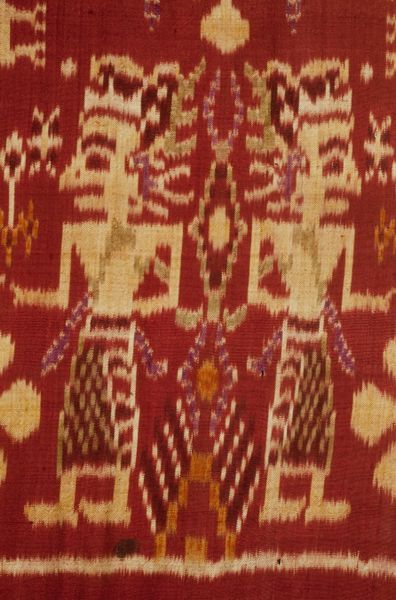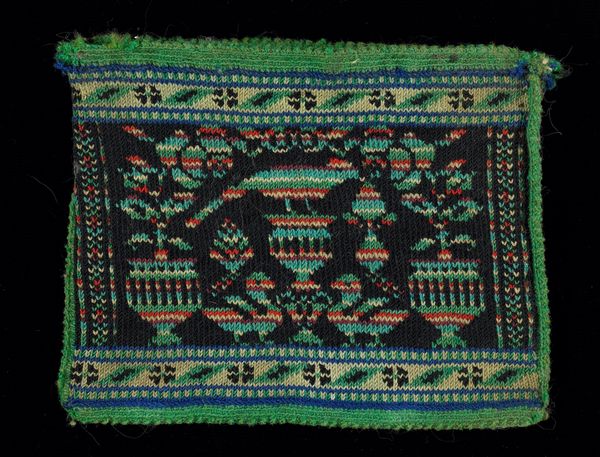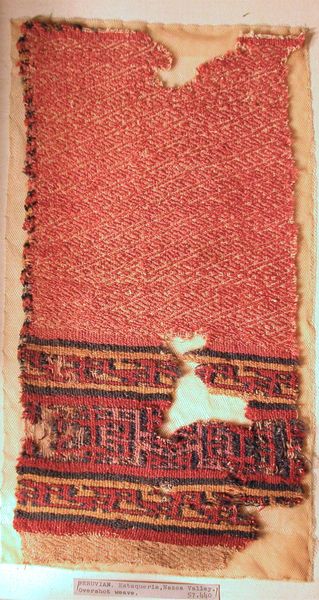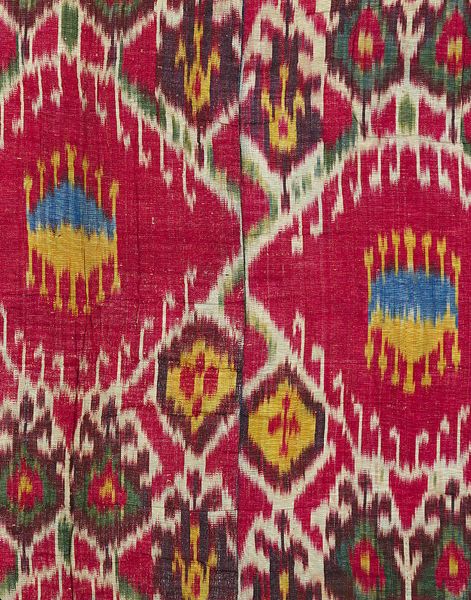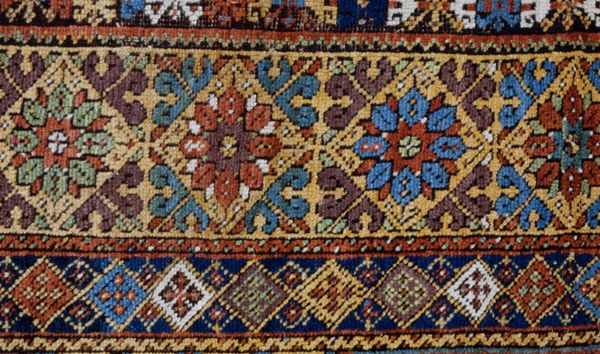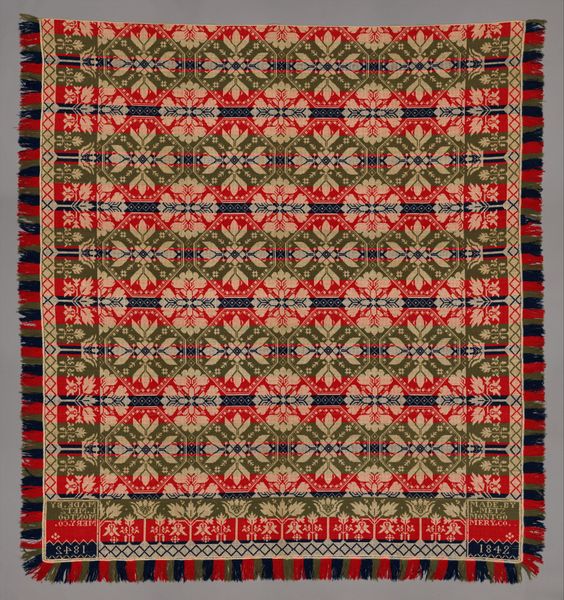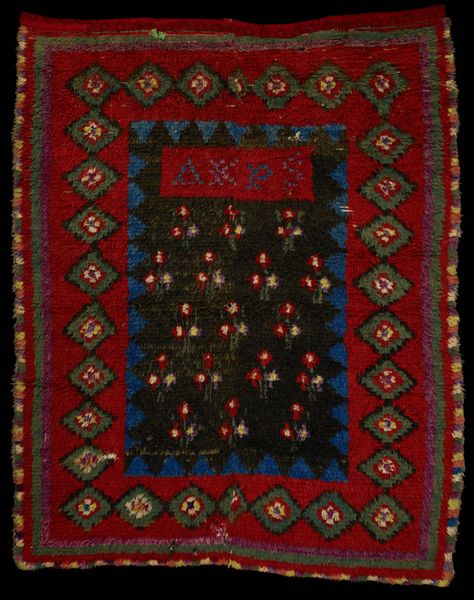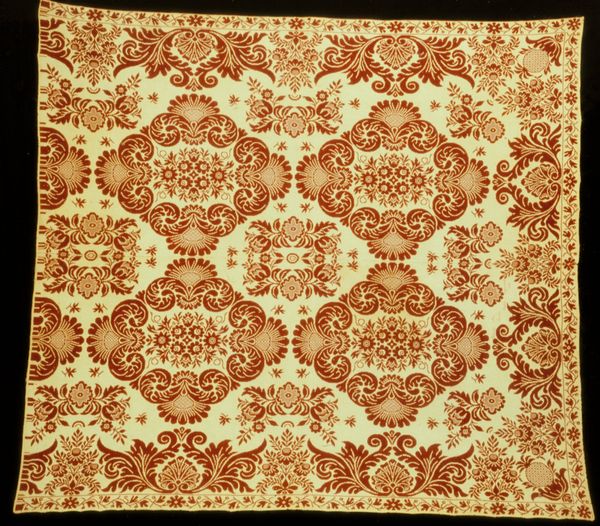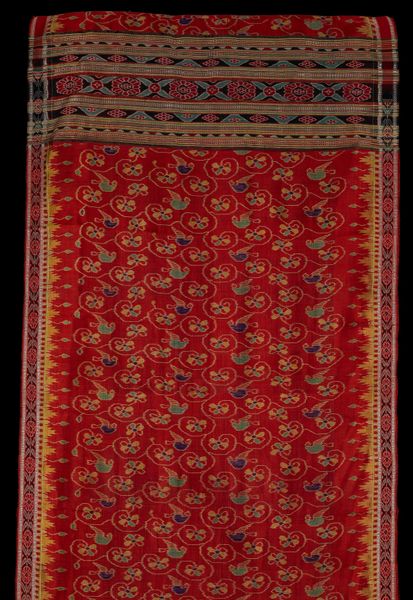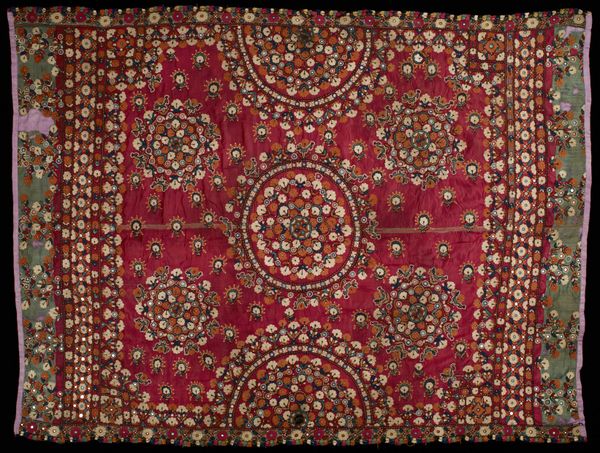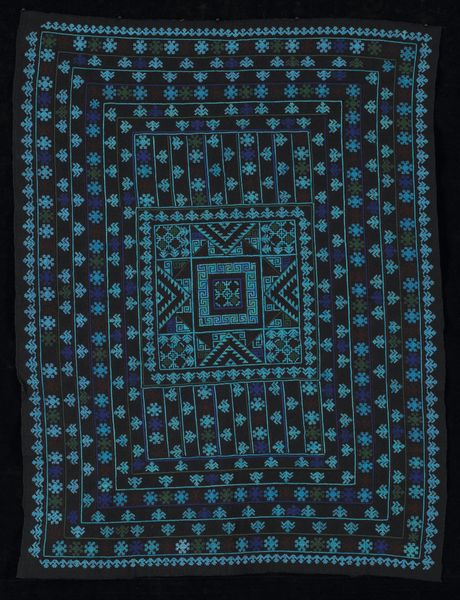
weaving, textile
#
natural stone pattern
#
weaving
#
textile
#
abstract pattern
#
organic pattern
#
geometric
#
islamic-art
#
texture
#
organic texture
Dimensions: 76 x 46 in. (193.04 x 116.8 cm)
Copyright: Public Domain
Editor: We're looking at a Prayer Rug from around the 19th century, a textile woven from wool. Its intricate geometric patterns are just mesmerizing. What strikes me is how these designs create such a feeling of depth, pulling you in. How do you interpret the visual and cultural significance of a piece like this? Curator: This rug offers a glimpse into the cultural landscape of its time, beyond its functionality. The careful craftsmanship and use of wool connect it to trade routes and nomadic communities where weaving was central to survival and artistic expression. The geometric patterns and abstraction signal its departure from figural representation, influenced perhaps by Islamic artistic traditions, inviting reflection rather than depicting specific narratives. Who commissioned this, and where was it displayed? These questions help us understand its role in social and religious life. Editor: So the patterns weren't just aesthetic choices but also reflections of a specific world view? Curator: Exactly. Museums are increasingly exploring the politics embedded in seemingly decorative arts. Who has the power to collect, preserve, and interpret these objects shapes public understanding of different cultures. Consider the power dynamic: this rug, originally integral to a community's prayer life, now rests behind glass. It prompts us to examine issues around cultural ownership and representation. Editor: That's a perspective I hadn't fully considered before. It is a piece of cultural history itself, shaped by its journey from creation to display. Curator: Indeed. Its story doesn't end with its weaving; it continues with its display and our interpretation today, offering valuable insights into both its origins and our own biases.
Comments
No comments
Be the first to comment and join the conversation on the ultimate creative platform.
